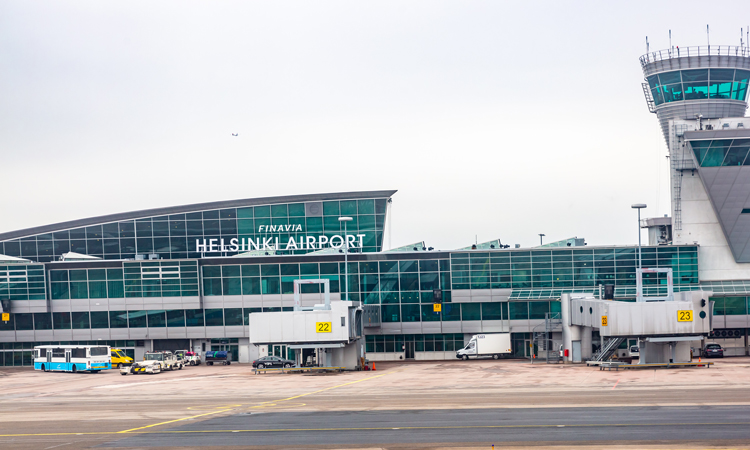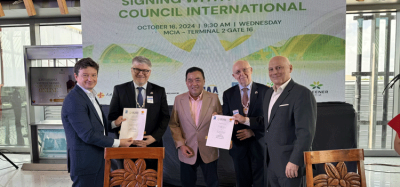How to make airports sustainable and reduce the environmental impact
- Like
- Digg
- Del
- Tumblr
- VKontakte
- Buffer
- Love This
- Odnoklassniki
- Meneame
- Blogger
- Amazon
- Yahoo Mail
- Gmail
- AOL
- Newsvine
- HackerNews
- Evernote
- MySpace
- Mail.ru
- Viadeo
- Line
- Comments
- Yummly
- SMS
- Viber
- Telegram
- Subscribe
- Skype
- Facebook Messenger
- Kakao
- LiveJournal
- Yammer
- Edgar
- Fintel
- Mix
- Instapaper
- Copy Link
Posted: 19 June 2020 | David Leonard - BREEAM, Ian Nicholson - BREEAM | No comments yet
David Leonard and Ian Nicholson from BREEAM – a leading sustainability assessment method – detail how airport operators can improve the environmental performance of their assets.


As the global awareness of aviation’s contribution to the climate crisis grows, so do expectations for airport operators to reduce their environmental impacts. In addition to the carbon footprint of flights, all airports have local impacts to manage, including air quality issues, noise pollution, waste generation and potential damage to local wildlife habitats and water courses1.
The design and operation of airport buildings and infrastructure provide opportunities to reduce impacts and demonstrate commitment to more sustainable practices. Airports are a complex working community of inter-related facilities and assets, which provides a challenge for the effective consideration and measurement of sustainability performance. A growing number of airport operators (and owners/occupiers of assets associated with airports) are choosing BREEAM and CEEQUAL to assess such facilities throughout their whole lifecycle.
BREEAM
BREEAM offers a holistic framework for sustainability on a building project and an independent, third‑party certification process that drives design teams to achieve best practice performances. BREEAM is a globally-recognised standard that can be locally adapted to suit the needs of any building type, anywhere in the world. CEEQUAL is the sustainability rating scheme for infrastructure which, like BREEAM, is structured as a certification process, encouraging teams to influence decision making on their projects in order to enable the delivery of better sustainability outcomes. The BREEAM family of schemes operated by the Building Research Establishment (BRE), including CEEQUAL, are together able to assess the sustainability of all elements of the built environment. Current versions of these schemes incorporate rigorous assessments of the most topical sustainability issues, driving performance in whole life/net-zero carbon, circular economy principles, resilience and ecological enhancement.
Airport terminal buildings certified through BREEAM to date include those at Oslo Airport (OSL), London Heathrow Airport (LHR) and Helsinki Airport (HEL). These assessments have used the Bespoke process (under the BREEAM New Construction scheme) to ensure that the BREEAM criteria are relevant to the demands of such buildings. Assessments of existing airport buildings (using BREEAM In-Use) have also been undertaken to identify opportunities for improvement in operational sustainability performance and to implement best practice measures in building renovations (using BREEAM Refurbishment & Fit-Out). In the same vein, CEEQUAL can also be applied to both construction works and operational maintenance activities.
CEEQUAL
CEEQUAL has and is being used across the civil and military aviation sectors to assess a wide range of airport facilities, including runways, taxiways, river diversions, car parks and other operational assets, such as piers. Certified examples include Heathrow Airport’s Terminal 5 and Stockholm Arlanda Airport (ARN). These projects have reported a range of benefits through their use of CEEQUAL. Possibly unsurprisingly, given the scale of runways, taxiways and aprons, many of the reported benefits focus around the more efficient use of resources. Specific benefits reported included the 100 per cent reuse of excavated material on site, active use of water in retention basins for site cleaning, water foot‑printing of materials and transportation of materials. In addition, the structure of the CEEQUAL scheme also enables it to be applied on a very wide range of assets. These include road, rail, energy, public spaces and utilities, many of which are relevant to airports.
Airport examples
The BREEAM certification of Heathrow Terminal 2 (A and B) used BREEAM Bespoke criteria, which recognised some of the unique characteristics/challenges of airport terminals, including security and passenger wayfinding. T2A achieved a BREEAM Excellent rating (interim Design Stage only), whilst T2B achieved a Very Good rating (final Post Construction stage).
Oslo Airport Terminal 2 achieved an Excellent rating (final Post Construction stage) through embedding sustainability considerations from the start of the project. The project team used innovative solutions to provide low carbon energy to the building; snow collected in the winter is stored and used to cool the building in summer months, whilst greywater and groundwater under the airport is used for heating. A 43 per cent reduction in embodied carbon was achieved through the careful selection of materials, including extensive use of wood for structural beams, the floor and parts of the roof2.
Asset performance
2020 offers a window of opportunity to build climate risk management into every business decision”
BREEAM and CEEQUAL certifications are increasingly being used across all sectors as a means of providing asset performance metrics for ESG (Environmental, Social and Governance) reporting and gaining access to green finance. In making a global shift towards sustainability and overcoming the climate crisis, green finance is seen as a vital catalyst. Bloomberg said that “money is gushing into any kind of asset labelled green or sustainable”3, whilst the Bank of England’s Governor, Mark Carney, has identified green finance as a major priority for the UK’s COP26 leadership, saying that 2020 offers a window of opportunity to build climate risk management into every business decision, to turn “an existential risk into the greatest commercial opportunity of our time”. It seems this call is being heeded by the aviation industry, with BNP Paribas and JetBlue Airways recently striking a new sustainability-linked finance deal4; the first of its kind in the sector.
So, having accessed the necessary finance to meet their sustainability ambitions, how can airport operators maximise their BREEAM rating and the performance of their assets? In designing new facilities or upgrading existing assets, sustainability needs to be integrated into the decision-making process from the project outset. Social sustainability factors – such as traveller experience and wayfinding – need to be balanced with environmental considerations, such as energy efficiency. The Helsinki Airport Terminal 2 Southern Extension shows how these factors can work in perfect harmony.
Case Study: Finavia Helsinki Airport T2 – Southern Extension


As part of its expansion plan, Finavia opted to certify all major extension projects at Helsinki Airport with BREEAM, aiming to achieve an Excellent rating. Finavia found that BREEAM’s holistic approach covered all aspects of its corporate strategy seamlessly.
Innovation
The high performance of Helsinki Airport’s South Pier in the BREEAM Management and Waste categories – scores of 96 and 80 per cent respectively – was enabled by extensive stakeholder collaboration, including CAVE consultations, for which the project achieved an Innovation Credit. CAVE involves a virtual reality experience of the building prior to completion, giving participants the opportunity to provide feedback and reduce the need for late design alterations or user complaints. These CAVE consultations, called ‘safaris’, proved beneficial, as major changes were made to the design; saving money, time and resources.
Energy
Energy efficiency is a key part of Finavia’s strategy and is a significant factor when working towards the goal of carbon-neutral airports. Helsinki Airport became carbon neutral in 2017, with low-carbon features including the efficient use of electricity provided by solar panels installed on the terminal rooftop and heating from district heating systems. There is energy-efficient transportation, external lighting and energy monitoring throughout the building. Finland’s first moving airport walkway was installed and chosen based on its energy efficiency features. These measures allowed for the project to achieve a category score of 83 per cent for Energy within BREEAM.
Health and wellbeing
Finavia has found that certifying against BREEAM has contributed to the creation of a smoother traveller experience. Prior to opening, 200 volunteers tested the functionality of the extension, which was found to be full of light, comfortable and well-functioning. The 4,500m2 of external glass facades allow for plenty of daylight to penetrate all corners of the building and provide travellers with views of planes taking off from the runway.
Finavia’s Technical Director, Henri Hansson, said: “BREEAM is an internationally-recognised standard and helped us to create an efficient (both in terms of cost and operations), environmentally-friendly and comfortable airport building for both our travellers and the airlines.”
References
- https://www.caa.co.uk/Consumers/Environment/Environmental-stakeholders/Airports/
- https://www.airport-technology.com/features/featuresustainable-success-oslo-airport-opens-worlds-greenest-terminal-5885304/
- https://www.bloomberg.com/graphics/2019-green-finance/
- https://www.businessgreen.com/news/4011294/green-finance-touches-aviation-industry
Biography


Biography


Issue
Related topics
Airport construction and design, Airside operations, Augmented reality (AR)/ Virtual reality (VR), Emissions, Runways and pavements, Sustainability, Sustainable development, Terminal operations
Related airports
Helsinki Airport (HEL), London Heathrow Airport (LHR), Oslo Airport (OSL), Stockholm-Arlanda Airport (ARN)
Related airlines
Related organisations
Bank of England, Bloomberg, BNP Paribas, BREEAM, Building Research Establishment (BRE), CEEQUAL, Finavia


















